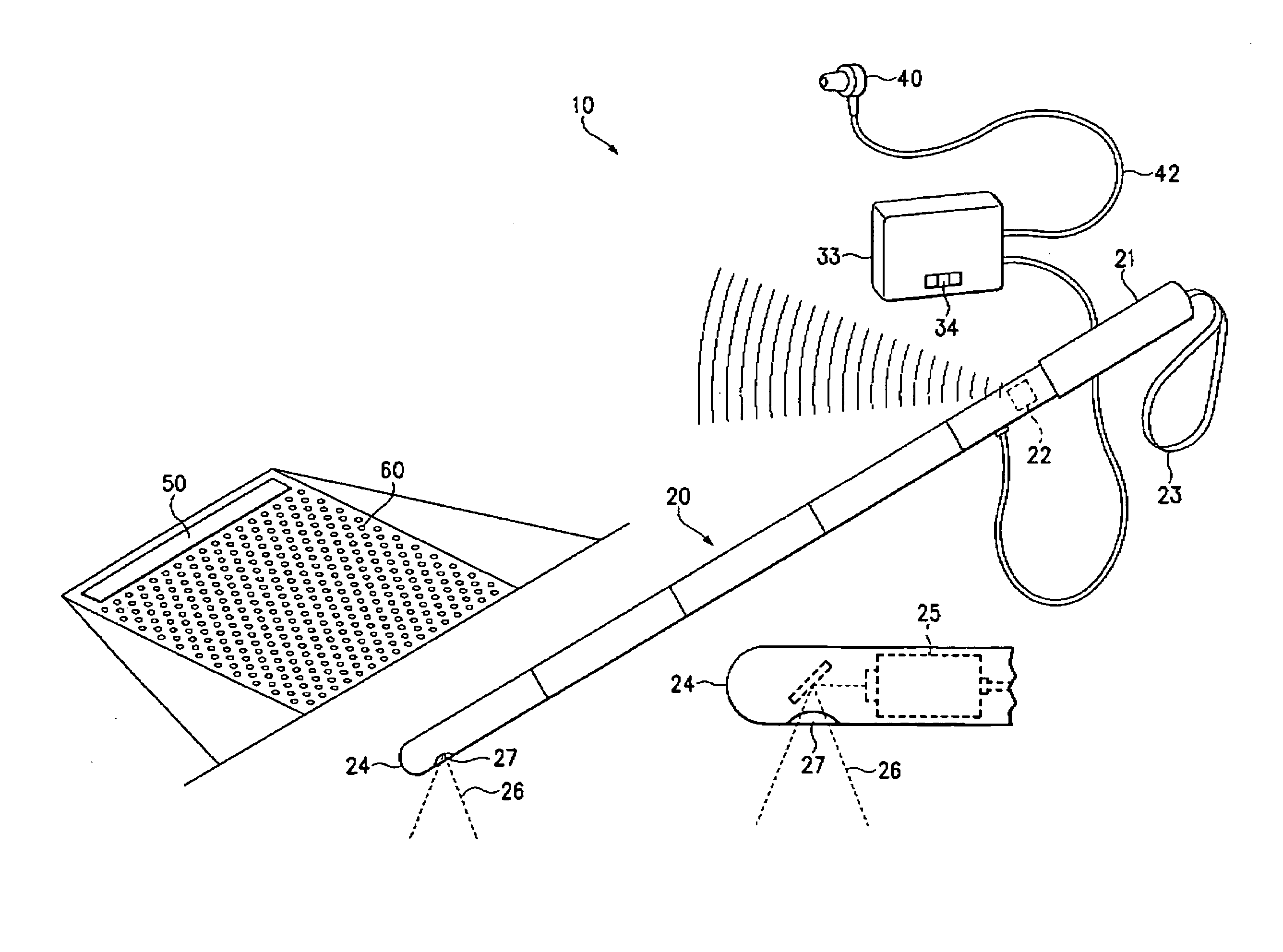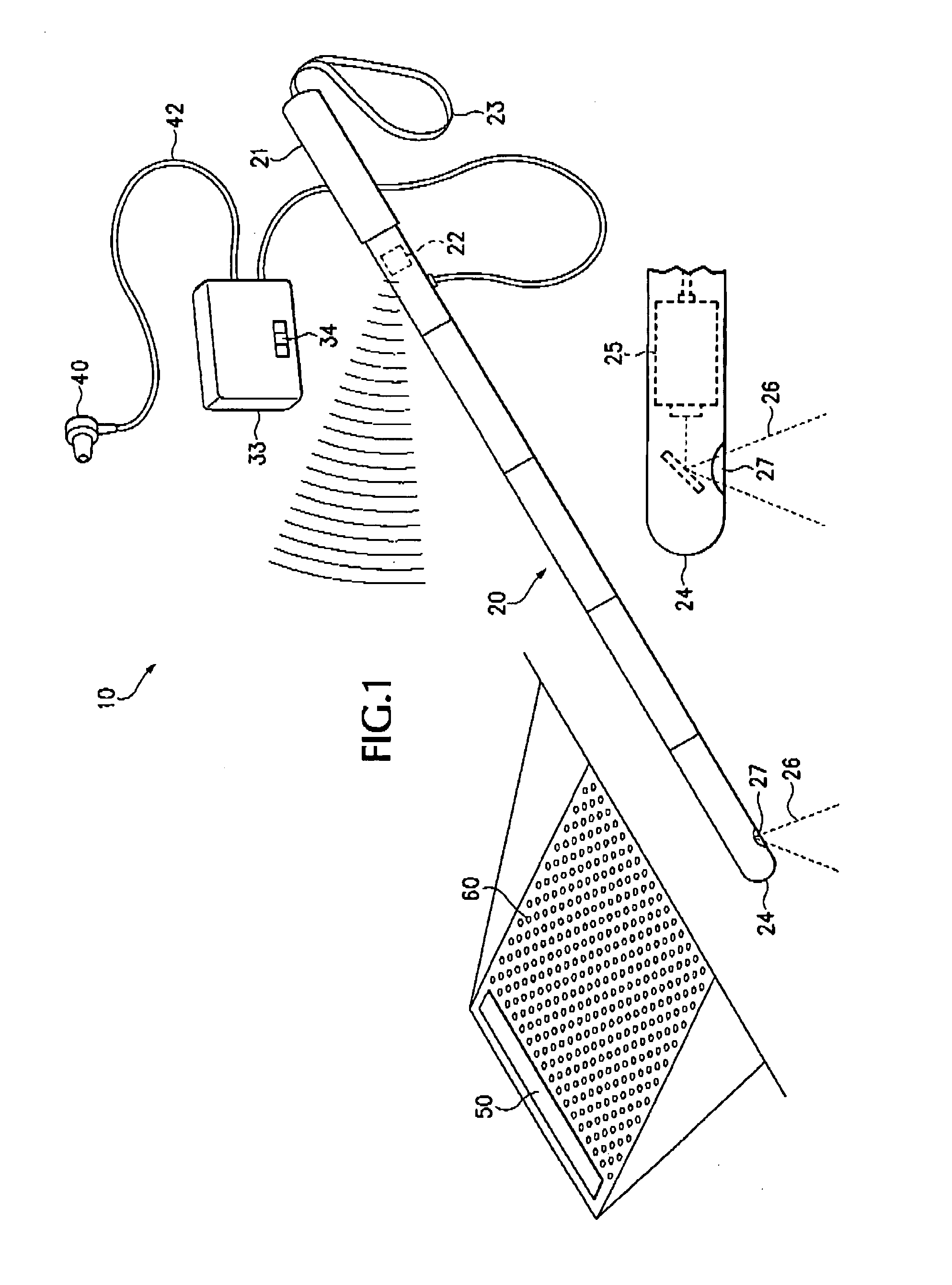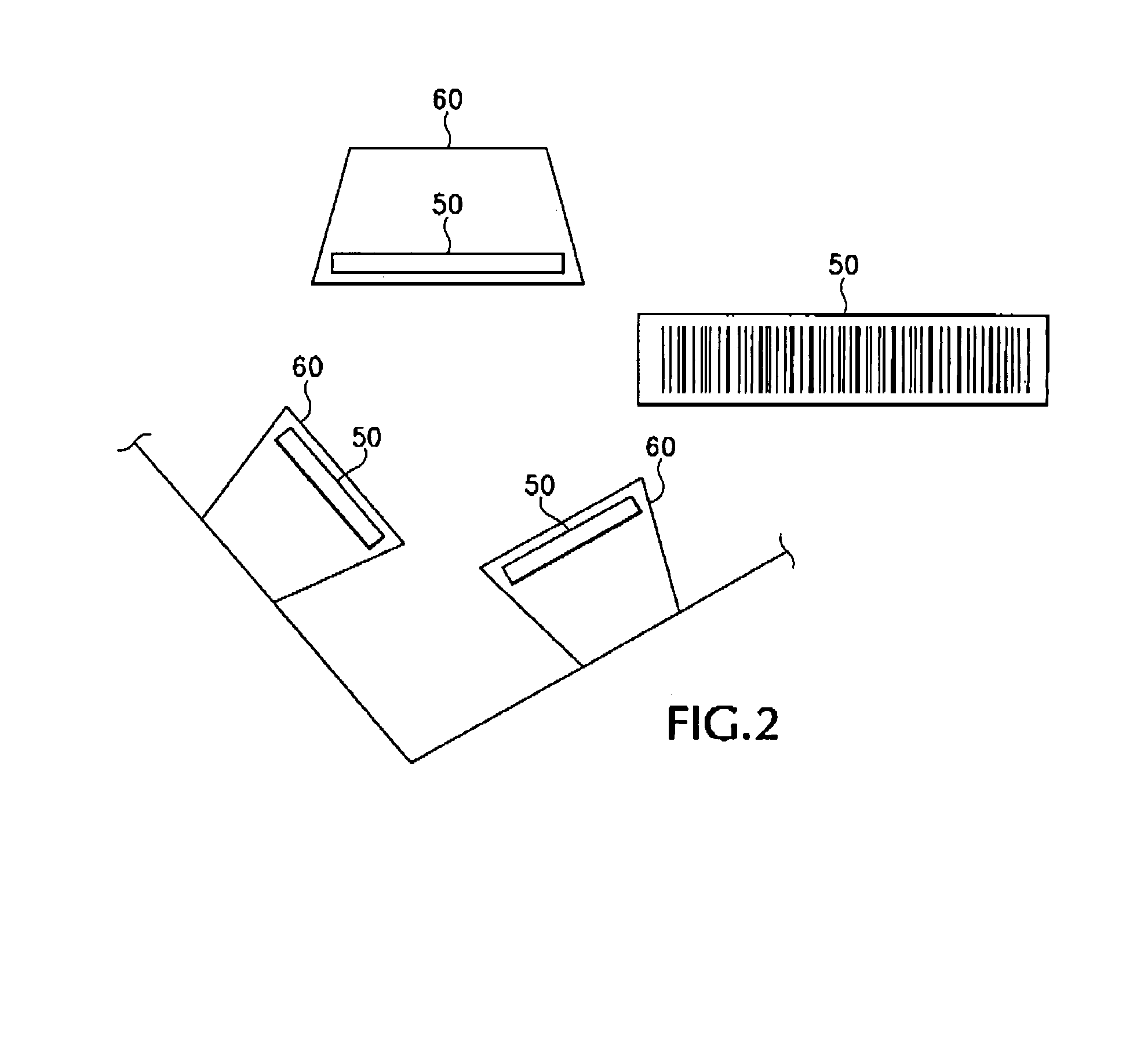Location, orientation, product and color identification system for the blind or visually impaired
a technology for blind or visually impaired and products, applied in the field of assistive technology, orientation and mobility (o & m), informational aids/systems, etc., can solve the problems of no such device that accesses b & vi persons to general product information through audio output, and no such devi
- Summary
- Abstract
- Description
- Claims
- Application Information
AI Technical Summary
Benefits of technology
Problems solved by technology
Method used
Image
Examples
Embodiment Construction
[0024]Broadly speaking, location, orientation, and color identification systems for the blind or visually impaired are described. Those of skill in the art will appreciate that the component parts and functions of the invention are briefly summarized in Table I below.
[0025]
TABLE ILOCATION, ORIENTATION, PRODUCT AND COLOR IDENTI-FICATION SYSTEM FOR THE BLIND OR VISUALLY IMPAIREDComponents List10Location Orienting System20Cane21Handle22Sonar Obstacle Alert23Wrist Loop24Tip25Barcode Scanner / Alert26Laser Beam27Laser Window28Mirror29Battery30Cable or Wireless Signal31Microprocessor32Hardwire or Wireless33Barcode / Color Decoder34On, Off and Volume Switch35Speech Synthesizer40Earphone42Hardwire to Earphone50Informational Barcode Site60Truncated Dome / Tiles61Radio Transmitter62Receiver70Barcode and Color Scanner71Wrist Loop72On and Off Switch73Battery Compartment74Trigger75Transmitter76Reader77Edge Catcher
[0026]The location orienting system 10 includes a cane 20, a microcomputer 30, and an ear...
PUM
 Login to View More
Login to View More Abstract
Description
Claims
Application Information
 Login to View More
Login to View More - R&D
- Intellectual Property
- Life Sciences
- Materials
- Tech Scout
- Unparalleled Data Quality
- Higher Quality Content
- 60% Fewer Hallucinations
Browse by: Latest US Patents, China's latest patents, Technical Efficacy Thesaurus, Application Domain, Technology Topic, Popular Technical Reports.
© 2025 PatSnap. All rights reserved.Legal|Privacy policy|Modern Slavery Act Transparency Statement|Sitemap|About US| Contact US: help@patsnap.com



